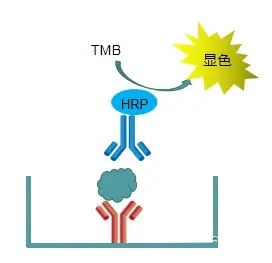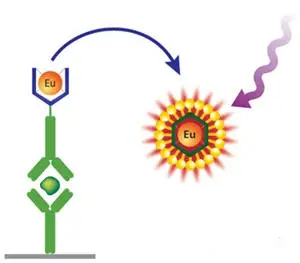
- English
- 简体中文
- Esperanto
- Afrikaans
- Català
- שפה עברית
- Cymraeg
- Galego
- 繁体中文
- Latviešu
- icelandic
- ייִדיש
- беларускі
- Hrvatski
- Kreyòl ayisyen
- Shqiptar
- Malti
- lugha ya Kiswahili
- አማርኛ
- Bosanski
- Frysk
- ភាសាខ្មែរ
- ქართული
- ગુજરાતી
- Hausa
- Кыргыз тили
- ಕನ್ನಡ
- Corsa
- Kurdî
- മലയാളം
- Maori
- Монгол хэл
- Hmong
- IsiXhosa
- Zulu
- Punjabi
- پښتو
- Chichewa
- Samoa
- Sesotho
- සිංහල
- Gàidhlig
- Cebuano
- Somali
- Тоҷикӣ
- O'zbek
- Hawaiian
- سنڌي
- Shinra
- Հայերեն
- Igbo
- Sundanese
- Lëtzebuergesch
- Malagasy
- Yoruba
- Español
- Português
- русский
- Français
- 日本語
- Deutsch
- tiếng Việt
- Italiano
- Nederlands
- ภาษาไทย
- Polski
- 한국어
- Svenska
- magyar
- Malay
- বাংলা ভাষার
- Dansk
- Suomi
- हिन्दी
- Pilipino
- Türkçe
- Gaeilge
- العربية
- Indonesia
- Norsk
- تمل
- český
- ελληνικά
- український
- Javanese
- فارسی
- தமிழ்
- తెలుగు
- नेपाली
- Burmese
- български
- ລາວ
- Latine
- Қазақша
- Euskal
- Azərbaycan
- Slovenský jazyk
- Македонски
- Lietuvos
- Eesti Keel
- Română
- Slovenski
- मराठी
- Srpski језик
New Arrival | SALE | Black Elisa Plates
2023-09-21
In a variety of situations in the life sciences, the timely, efficient and economical determination and quantification of antigens or antibodies present in a sample is a critical component.
Enzyme-linked immunosorbent assay (ELISA) has proved to be an invaluable research and diagnostic tool for the measurement of antibodies or antigens in biological samples by adsorption of known antigens or antibodies onto the surface of a solid-phase carrier, which allows for enzyme (mainly HRP)-labeled antigen-antibody reactions on the solid-phase surface. This technique can be used to detect large molecule antigens and specific antibodies, etc. It has the advantages of being fast, sensitive, simple, and the carrier is easy to standardize. However, the sensitivity and dynamic range of ELISA detection are greatly limited by the shortcomings of the light absorption technique due to the huge influence of external conditions on the color change of the solution and the low effective linear range of the OD value.

The DELFIA technology ---- is simply to replace the enzyme HRP with lanthanide chelate (Eu, Sm, Tb, Dy) labeling on the detection antibody in the traditional ELISA assays. The lanthanides used in DELFIA are a special class of fluorescent elements, which places demands on the experimental materials --- Elisa plates. Lanthanides have fluorescence lifetimes of microseconds or even milliseconds, which in combination with time-resolved detection significantly reduces autofluorescence background interference, and their wide Strokes' shift greatly improves the sensitivity of the assay.

The vast majority of ELISA choose transparent enzyme labeling plate as the carrier and container, but the light emitted in the luminescence reaction is isotropic, the light will not only be dispersed from the vertical direction, but also dispersed from the horizontal direction, and it will easily pass through the gap between the various holes of the transparent enzyme labeling plate and the wall of the holes.Neighboring holes interact with each other and affect the experimental results.
White Elisa Plates can be used for weaker light detection and are commonly used for general chemiluminescence and substrate color development (e.g. dual luciferase reporter gene analysis).
Black White Elisa Plates have a weaker signal than white enzyme labeling plates due to their own light absorption, and are generally used for detecting stronger light, such as fluorescence detection.

Advantages of Cotaus®Elisa Plates
● High binding
Cotaus®Elisa plates with black tube are made of non-self-fluorescent material, the surface has been treated to greatly enhance its protein binding capacity, which can reach 500ng IgG/cm2, and the molecular weight of the main bound proteins is >10kD.
● Low background fluorescence eliminates problems caused by non-specific reactions.
black tubs can eliminate some weaker background interference fluorescence because it will have its own light absorption.
● Detachable design
The detachable design of white enzyme plate frame and black enzyme slats is more convenient for operation. Pay attention to the disassembling action, do not force to break at one end, otherwise it will be easy to break.
Product Classification
|
Model No. |
Specification |
Colour |
Packing |
|
CRWP300-F |
Non-detachable |
clear |
1 pcs/pack,200packs/ctn |
|
CRWP300-F-B |
Non-detachable |
Black |
1 pcs/pack,200packs/ctn |
|
CRW300-EP-H-D |
Detachable |
8 well×12 strip Clear,White Frame |
1 pcs/pack,200packs/ctn |
|
CRWP300-EP-H-DB |
Detachable |
8 well×12 strip Black |
1 pcs/pack,200packs/ctn |
For more product details, please feel free to contact us


